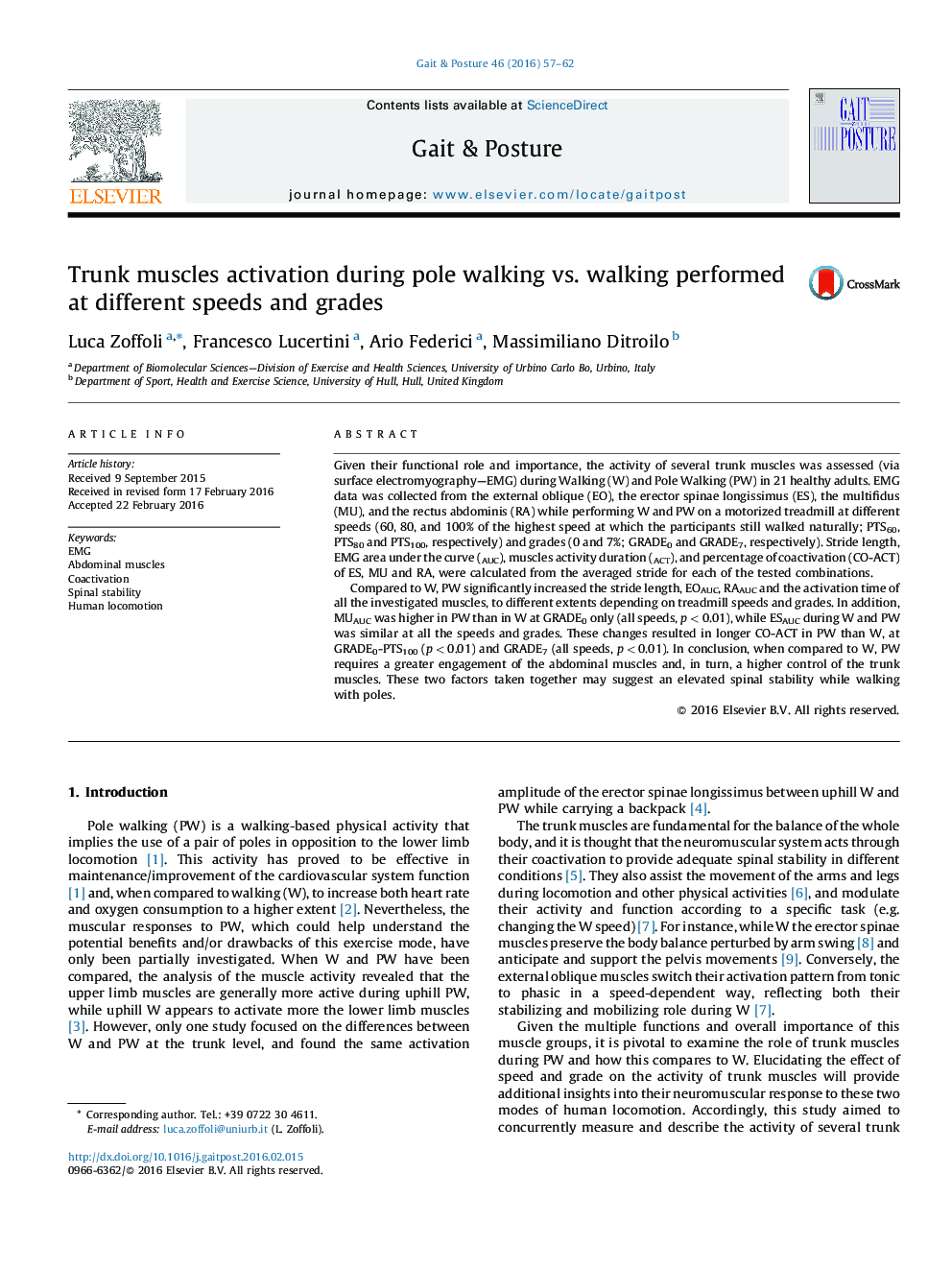| کد مقاله | کد نشریه | سال انتشار | مقاله انگلیسی | نسخه تمام متن |
|---|---|---|---|---|
| 6205785 | 1603849 | 2016 | 6 صفحه PDF | دانلود رایگان |
- Pole walking yields a greater activation of the abdominal muscles than walking.
- Higher grades increase the spine extensors muscle activity only during walking.
- Using poles during level walking increases the activity of the multifidus muscle.
- Using poles does not change the activation amplitude of the erector spinae muscle.
- Pole walking requires greater control of the trunk region than walking.
Given their functional role and importance, the activity of several trunk muscles was assessed (via surface electromyography-EMG) during Walking (W) and Pole Walking (PW) in 21 healthy adults. EMG data was collected from the external oblique (EO), the erector spinae longissimus (ES), the multifidus (MU), and the rectus abdominis (RA) while performing W and PW on a motorized treadmill at different speeds (60, 80, and 100% of the highest speed at which the participants still walked naturally; PTS60, PTS80 and PTS100, respectively) and grades (0 and 7%; GRADE0 and GRADE7, respectively). Stride length, EMG area under the curve (AUC), muscles activity duration (ACT), and percentage of coactivation (CO-ACT) of ES, MU and RA, were calculated from the averaged stride for each of the tested combinations.Compared to W, PW significantly increased the stride length, EOAUC, RAAUC and the activation time of all the investigated muscles, to different extents depending on treadmill speeds and grades. In addition, MUAUC was higher in PW than in W at GRADE0 only (all speeds, p < 0.01), while ESAUC during W and PW was similar at all the speeds and grades. These changes resulted in longer CO-ACT in PW than W, at GRADE0-PTS100 (p < 0.01) and GRADE7 (all speeds, p < 0.01). In conclusion, when compared to W, PW requires a greater engagement of the abdominal muscles and, in turn, a higher control of the trunk muscles. These two factors taken together may suggest an elevated spinal stability while walking with poles.
Journal: Gait & Posture - Volume 46, May 2016, Pages 57-62
